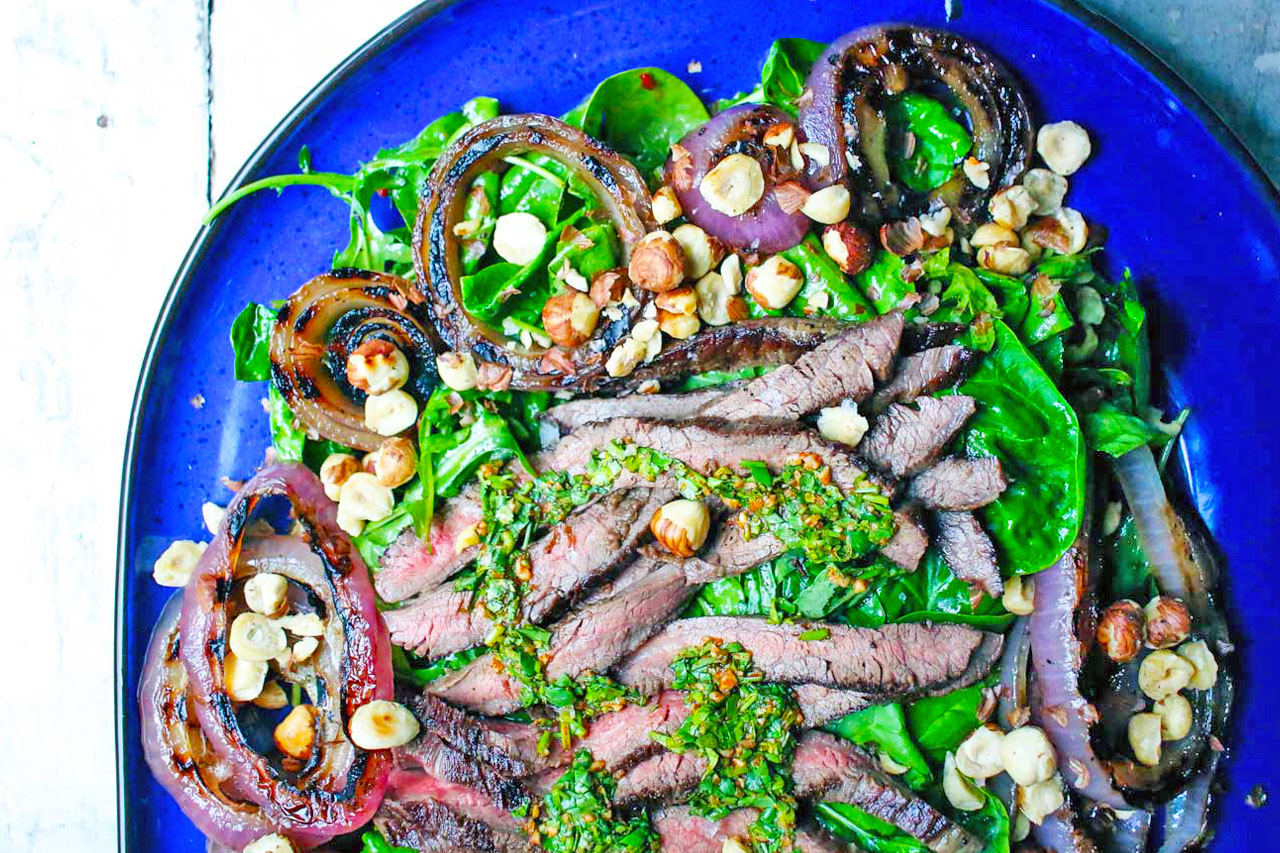
When it comes to steak, nothing beats a perfectly cooked, well-seasoned, juicy cut. But this is easier said than done. It can be difficult to know what tools to use, what to buy at the butcher, how different cuts of steak vary and the best way to cook them.
With the stakes so high (pardon the pun, but these cuts can be expensive!), we’re giving you the ultimate guide to choosing and grilling steak this summer and beyond.

BBQ Steak Basics
1. Let steak come to room temperature before grilling: About 30 minutes before grilling, take it out of the fridge. This will allow the meat to cook evenly.
2. Get the grill super-hot: You want to get good sear on your steak for the perfect finished crust. Heat your grill to at least 450ºF before cooking.
3. Season with a bit of oil and lots of salt: Brush steaks with a thin layer of high-temperature oil, like grape seed or refined avocado. Then, don’t just sprinkle salt on your steak, season with reckless abandon. A thick slab of meat needs more salt than you think. Use kosher or coarse salt on both sides and apply until you can see it on the surface of the meat.
4. Use a thermometer: Unless you’re a veteran grill master with tons of experience cooking steak, it’s difficult to tell how well cooked the meat is just by touching it. Quit guessing and take the internal temperature with an instant-read of meat thermometer. To avoid burning the exterior if a steak is very thick, remove it from direct heat and finish cooking on indirect heat until it has reached your desired internal temperature.
5. Rest the steak: Let your steak rest for at least 10 minutes on a warm plate before slicing. The meat needs time to recirculate its juices, and that can only be achieved through patience. Once you’ve come this far in cooking the perfect steak, it would be a shame to ruin it! Your steak will not get cold (this is where a warm plate comes in handy). When your time is up, slice against the grain for more tender slices.
Steak Doneness Temperatures
With the basics mastered, it’s time to discuss some of the common cuts and how they differ.
The Best Cuts of Steak for Grilling
Ribeye (Rib-eye, Rib Eye) Steak: Sometimes called entrecote, it can be purchased with the bone intact or boneless. It’s a tender steak with plenty of delicious fat marbling. This cut has a big, beefy flavour and is supremely juicy. For this reason, ribeye is usually on the pricier side, making it perfect for special occasions.
Flank Steak and Skirt Steak: Both very affordable (though the popularity of flank steak has made it rise in price recently) and tasty steaks, but they require a bit more work than other cuts. Flank steak can be tough and chewy, however, marinating overnight and cooking only to medium-rare can help keep it tender. After marinating, grilling and resting, flank steak must be thinly sliced across the grain to remain tender. Skirt steak should be prepared the same way as flank steak: marinated, grilled to medium-rare, rested and sliced against the grain. Flank and skirt steaks are great for weeknights and entertaining large groups.
New York Strip Steak: This cut is also known as the strip steak, top sirloin, top loin and contre-filet. The meat has a finely-grained texture and rich, beefy flavour. Its medium fat content, decent marbling and tender texture (less so than ribeye, but this cut is also less expensive) make it an ideal steak for barbecuing.
Porterhouse Steak: This steak is also known as the T-bone, a bone-in steak that has two of the most prized cuts of beef in one tidy package. On one side, the tenderloin, and on the other, the ribeye. The tenderloin portion will generally cook a bit faster than the ribeye portion, but the bone helps to keep the meat juicy. The porterhouse is the perfect steak for high-heat barbecues and entertaining to impress.
Now that you’ve nailed barbecued steak 101, it’s time to fire up the grill and dive into a recipe. Try this Steak Salad with Onions and Cilantro Chimichurri for a majorly satisfying meal.
